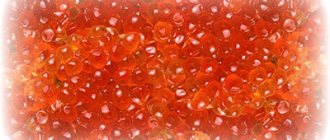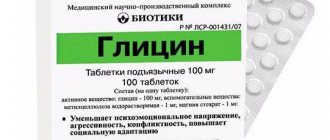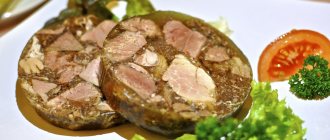Oscillococcinum is used during breastfeeding during the treatment of influenza and ARVI. It belongs to the category of homeopathic remedies that have an antiviral effect.
The components included in Oscillococcinum are harmless to infants, so a nursing mother does not have to worry that taking this drug will negatively affect the health of her baby. Although the use of the medicine is not contraindicated during lactation, a woman should definitely consult a specialist before starting to use it.
Oscillococcinum during breastfeeding is used during the treatment of influenza and ARVI
Dosage form and components of the drug, its safety during lactation
Oscillococcinum is a homeopathic remedy from the French pharmaceutical company Boiron. It is produced in the form of round, water-soluble white granules, packaged in 1 g quantities in transparent oblong polypropylene containers. One cardboard package contains 6, 12 or 30 containers, placed in blisters of 3 pieces, and a medical note containing detailed information about the drug.
The main active ingredient of Oscillococcinum is an extract obtained from the heart and liver of the Barbary duck (Anas barbariaelium, hepatic et cordis extractum). Its dosage per 1 g of granules is 0.01 ml. In addition to the active ingredient, the medicine contains lactose and sucrose.
Oscillococcinum has a pronounced antiviral effect. When taken orally, the drug activates the body's defenses, accelerates recovery and prevents complications after illness.
How does the medicine work?
Oscillococcinum is a homeopathic remedy that is officially approved for use during lactation and breastfeeding both in foreign countries and in Russia and the CIS countries. The manufacturer of the drug is the French pharmaceutical company Boiron.
The drug was first used in France. In the post-Soviet space, the product became widely used only after 2000.
As the manufacturer notes, using oscillococcinum can effectively resist influenza even during an epidemic.
The mechanism of action of this drug is based on stimulating human immunity to fight influenza pathogens.
The scheme of action of the drug is as follows.
- Accumulation of the maximum dose of oscillococcinum (within 1-3 days from the start of administration, depending on the frequency and dose of administration).
- Stimulating the human body to produce additional cells to fight cold pathogens.
Thus, oscillococcinum causes the body to activate defense mechanisms, but does not deactivate the symptoms of the disease.
That is, the risk of developing or developing a cold is reduced.
This property of oscillococcinum distinguishes it from other cold medications that contain substances with antiseptic properties.
But these types of medications are most often prohibited during lactation. Therefore, breastfeeding women should not take antiviral drugs on their own.
The list of drug components declared by the manufacturer contains:
- sucrose;
- lactose;
- extract of extract from the heart and liver of barbary (muscovy) duck.
The last component is included in the composition due to the fact that in the research of homeopath J. Roy, well-known in medical circles, it was discovered that the main causative agent of viral colds is oscillococcus, which is found in high concentrations in the liver and heart of the musky duck.
It is the extract from the organs of this bird that serves as a kind of grafting material. It stimulates the body to produce antibodies to fight colds.
Recommendations for use, contraindications
Oscillococcinum during breastfeeding is prescribed as part of the complex treatment of infectious viral diseases, accompanied by fever, body aches, chills, runny nose, sore throat, etc. In the autumn-winter period, when there is a rapid increase in the incidence of influenza and ARVI, the doctor may decide to prescribe this homeopathic medicine to a nursing mother for preventive purposes. He should also determine the dosage and duration of use of the granules.
Before starting to take Oscillococcinum, a young mother needs to make sure that she and her baby have no contraindications to this drug. Experts do not recommend treatment with granules in the following cases:
- with hypersensitivity to their ingredients;
- with hypolactasia;
- with lactase deficiency;
- with glucose-galactose malabsorption.
You should start using Oscillococcinum granules immediately after the first symptoms of influenza or ARVI appear. The drug increases the body's resistance to viruses and facilitates the course of the disease. The homeopathic remedy should be taken a quarter of an hour before meals or 60 minutes after meals in the dose prescribed by the attending physician. To achieve a therapeutic effect, a nursing woman should place the required amount of granules under the tongue and slowly dissolve them until completely dissolved.
After taking the drug, you can rinse your mouth with water. If within 2-3 days after the start of antiviral therapy the condition of a nursing mother has not improved or she has complaints of new symptoms, she needs to consult a doctor for correction of the treatment regimen.

Oscillococcinum is a homeopathic remedy from the French pharmaceutical company Boiron.
Oscillococcinum during breastfeeding: can a nursing mother take it or not during lactation?
During the period of breastfeeding, a young mother can afford a very small list of approved medications for colds or flu. Most therapists prescribe Oscillococcinum during breastfeeding; whether it is possible or not is a question that interests nursing. Whether it is capable of harming the baby and its mother - we will find out in the article.
Properties and principle of operation
Oscillococci cause colds. Most of them are concentrated in the liver of a duck called musky. The extract of these microorganisms served as the basis for the creation of the drug Oscillococcinum.
It is a homeopathic medicine, its components increase the body's defenses. Thus, it can be argued that this remedy reduces the risk of colds.
Unlike other antiviral drugs, Oscillococcinum does not contain an antiseptic, therefore it is allowed during pregnancy and lactation, even for young children. It is very important to take it in the necessary and correct dose.
It should be noted that the instructions included inside the drug do not describe exactly how the medicine works. The medication has virtually no contraindications, except for allergies to sucrose and lactose.
Not all experts recognize this medicine, as they consider it a dummy. However, Oscillococcinum during breastfeeding in our country is very actively prescribed by therapists.
The drug contains no harmful components that would adversely affect the body of a pregnant, nursing mother or her child. ACC or Bromhexine are considered the most productive, but their use is prohibited during breastfeeding.
Oscillococcinum for hepatitis B is prescribed at the very beginning of influenza, colds or diseases of the upper respiratory tract. It is important to note that treatment with this medication must be started as early as possible, otherwise you may simply not have time. If the infection manages to spread, the homeopathic remedy is unlikely to help.
Considering the fact that this drug is considered the safest, many mothers do not visit a doctor at the first signs of illness and prescribe the drug themselves. This is completely wrong! Only the doctor sets the required dosage and gives all the necessary recommendations.
Is it possible during lactation?
Many experts prescribe Oscillococcinum to young mothers, since it has virtually no contraindications or dangerous components in its composition. But, despite all this, a woman should not prescribe this drug on her own, much less the dosage; this can have serious consequences for the baby, since the components of the drug are absorbed into the blood and enter breast milk.
Breastfeeding women are allowed to take Oscillococcinum without fear both for illnesses and for prevention. Some experts even insist that in winter and early spring, late autumn, young mothers take the prescribed dosage of the medicine for preventive purposes.
How to take it correctly during breastfeeding?
Is Oscillococcinum suitable for a nursing mother? We have already figured it out. But how to take this drug correctly during lactation?
White tablets or tubes are usually taken a quarter of an hour before or after a meal. The maximum effect is achieved if the tablet dissolves under the tongue.
If prevention is necessary, a nursing woman should limit herself to one tablet per week. For colds and flu, in the first two to three days you should take no more than 2 pieces per 24 hours. The interval between doses is usually 6-8 hours. In the case when the cold has persisted, you need to take it in the same amount (2 pieces per day) for at least three days.
There is no need to change the feeding regimen or adjust the drug intake to it. Breast milk can be given directly to the baby; there is no need to express it, much less boil it before feeding. But when administering the medicine, carefully monitor the reaction of the baby’s skin on the first day. There is a possibility of irritation and rashes.
Doctors today have not yet come to a general conclusion whether Oscillococcinum is really such a miracle drug for nursing mothers and other categories of people or is it just a dummy? It contains no active components, as well as harmful components. According to reviews from users, especially young mothers, this drug can be called effective if taken immediately at the time of illness or for prevention.
During lactation, doctors have the right to prescribe women a not so large list of medications during colds. Oscillococcinum is considered the most popular. This is a homeopathic remedy, so there is a lot of controversy surrounding its effectiveness. The medicine is considered completely harmless, it has virtually no contraindications.
You will learn more information about this drug from our video.
Source: https://molzheleza.ru/laktatsiya/chem-lechitsya-kormyashhej-mame/otsillokoktsinum-pri-grudnom-vskarmlivanii-mozhno-ili-net.html
Side effects on the body and overdose
Adverse reactions from Oscillococcinum rarely develop in women during the lactating period. In the vast majority of patients, they are associated with individual intolerance to the components of the drug and manifest themselves in the form of redness on the skin, rash and itching. The same symptoms may occur in a baby receiving breast milk from a mother who is taking Oscillococcinum. If undesirable reactions to the drug occur, the woman should stop using it further and seek medical help. If the described side symptoms are observed in an infant, he should be weaned for 48 hours and immediately shown to a pediatrician.
Effect of the drug on a nursing mother and child
Oscillococcinum does not contain dangerous components, so it can be used without hindrance during breastfeeding and pregnancy. The active ingredients of the drug do not have a negative effect on either the mother’s body or the child’s body. The only thing that needs to be taken into account is that, individually, the mother may develop an allergy to certain components of the drug, and after they are absorbed into the milk, the child may also develop an allergy. That is why breastfeeding women should be prescribed this remedy by a homeopathic specialist who will not only correctly determine the dosage, but will also monitor the course of the disease.
Cost and storage requirements
Oscillococcinum is not cheap. In the Russian Federation, the average price of a package containing 6 containers of granules in the first quarter of 2020 was 370 rubles. Despite the rather high cost, this drug is very popular among nursing mothers, since many other drugs used in the fight against influenza and ARVI are contraindicated for women during lactation. Oscillococcinum is a universal medicine intended for both treatment and prevention of viral diseases. It not only promotes the rapid recovery of the young mother, but also prevents her from developing severe complications after the illness.
Is Oscillococcinum possible while breastfeeding?
Oscillococcinum during breastfeeding is often used by young mothers for the treatment of viral diseases.
Effective medicine or a dummy?
Oscillococcinum has been successfully sold in pharmacies for several years. Doctors prescribe the drug quite often, mainly to mothers, breastfeeding and pregnant women. In many situations, the drug is recommended for the treatment of children. However, controversial discussions regarding the effectiveness of its use regularly develop around the drug.
Experts practicing official medicine are convinced that Oscillococcinum is a drug that has no medicinal properties, since research has not revealed any active ingredients in its composition. This medicine can be used during breastfeeding.
Supporters of homeopathy are confident that Oscillococcinum is a wonderful remedy with good results in the prevention of various colds. And if you use the drug in the first stages of the disease, it is possible to quickly and effectively cope with the manifestations of influenza and acute respiratory infections, significantly alleviating the symptoms of the disease.
The medicine does not contain dangerous components, and it does not have a harmful effect on the body of a nursing mother. The developers claim that the composition of the drug Oscillococcinum includes:
- Muscovy duck liver extract;
- cane sugar;
- milk sugar (lactose).
Among the contraindications, one can single out only individual intolerance to certain substances that make up the medicine. In exceptional situations, minor allergies may occur.
How does the drug work?
The effect of homeopathic remedies is that they control the protective functions of the human body. In other words, the appearance of any complications forces the immune system to produce a larger number of active cells, that is, to fight the disease.
Several years ago, scientists came to the conclusion that oscillococci contribute to the development of colds. And recently it was revealed that the largest accumulation of this type of bacteria is present in the liver of the musky duck. Based on the extract from this organ, the drug Oscillococcinum was created.
Ingestion of the extract, which contains the required number of bacteria, into the body activates the patient’s immunity in a short period of time.
That is, the medicine does not alleviate the course of the disease, but destroys the source of the disease through existing mechanisms in the human body.
This is what distinguishes it from other medications, which contain anti-inflammatory substances that alleviate the symptoms of the disease.
Use of the drug during breastfeeding
The dosage of Oscillococcinum is prescribed to each breastfeeding woman individually. The description of the drug states: during lactation and pregnancy it should be taken after consultation with your doctor. Before starting treatment, you should definitely visit a doctor, he will prescribe a course of therapy.
Oscillococcinum is produced in the form of round-shaped and white dragees; they have no taste or smell. The contents of the dose should be placed under the tongue and held until it is completely dissolved. The medicine is recommended to be taken before meals (15 minutes before) or one hour after.
The dosage of the medicine is different for each patient, but on average it is:
- For the purpose of preventing ARVI or influenza - 1 dose 1 time every 7 days during the period of ARVI spread;
- In case of the first symptoms of the disease - 2 doses per day with a time interval between doses of at least 6 hours;
- during the advanced stage of the disease - 1 dose in the morning and in the evening for 3 days.
The course of treatment depends on many circumstances and is prescribed by the doctor. And since the safety of the drug Oscillococcinum has not yet been fully studied, women should be careful during breastfeeding.
Homeopathic doctors assure that during lactation, Oscillococcinum is considered the best option when choosing a medicine for a cold.
Unlike other medications, it does not contain harmful components, it does not pose any danger to nursing mothers. However, like any other medicine, Oscillococcinum does not help everyone.
Most mothers who took this remedy claim that the result is observed only in the first two days of the disease.
According to experts, it is better to use Oscillococcinum as a prophylactic against influenza and ARVI. The components of the drug activate the immune system, and all signs of the disease will leave the body quickly enough, and the mother will be able to return to her normal lifestyle.
Oscillococcinum is a drug that, when taken, will not cause difficulties in feeding your baby breast milk. In this regard, many mothers have the opportunity to treat colds and flu without stopping breastfeeding.
Skripnik Oksana
Source: https://KrohaPuz.ru/grudnoe-vskarmlivanie/ocillokokcinum-pri-grudnom-vskarmlivanii.html
Instructions for use for nursing mothers
The powder is packaged in tubes, each of which contains 1 dose of the drug. The pack contains 1, 12 or 30 capsules: 12 doses of oscillococcinum - a full course for a nursing mother. The instructions for use do not specify a special form of administration and dosage for breastfeeding. Used sublingually (under the tongue).
Admission rules
- 15-20 minutes before meals, or an hour later.
- The capsule is placed under the tongue.
- Do not remove or swallow until completely absorbed.
- For children, dissolve in 10 ml of water (given from a spoon, syringe, bottle).
With the recommended dose absorption, the contents enter the bloodstream, bypassing the stomach, since there are many small blood vessels located under the tongue. Relevant for patients suffering from gastrointestinal disorders. The effect of sublingual dissolution occurs after 15-20 minutes.
- For prevention purposes – 1 granule every 7 days.
- At the first symptoms - 1 dose, if the condition persists, repeat twice after 6 hours.
- For acute form – 1 granule in the morning and evening for 3 days.
If the symptoms persist or worsen, the course is stopped and the ineffectiveness of the drug is stated. It is necessary to consult a doctor to clarify the diagnosis and adjust treatment. When breastfeeding, oscillococcinum improves the mother’s condition and does not affect the composition of milk, so fears about “is it possible or not” are unfounded. If a woman accepts homeopathy, then the remedy is highly likely to work (like a placebo).
Contraindications and side effects

. According to the official instructions from the manufacturer, Oscillococcinum does not cause side effects and is well tolerated by the body. But during lactation and breastfeeding, a woman should exercise special caution and take medications only with the doctor’s permission.
At the same time, there is a small list of contraindications to the use of Oscillococcinum:
- glucose-galactose malabsorption;
- lactose intolerance by the body;
- lactase deficiency;
- hypersensitivity to the active substances contained in the drug.
Attention! Since Oscillococcinum is a homeopathic remedy, its use does not interfere with the simultaneous use of other medications prescribed by a doctor during breastfeeding. Regarding the possibility of combining medications with each other, especially women during breastfeeding, you should consult a specialist.











